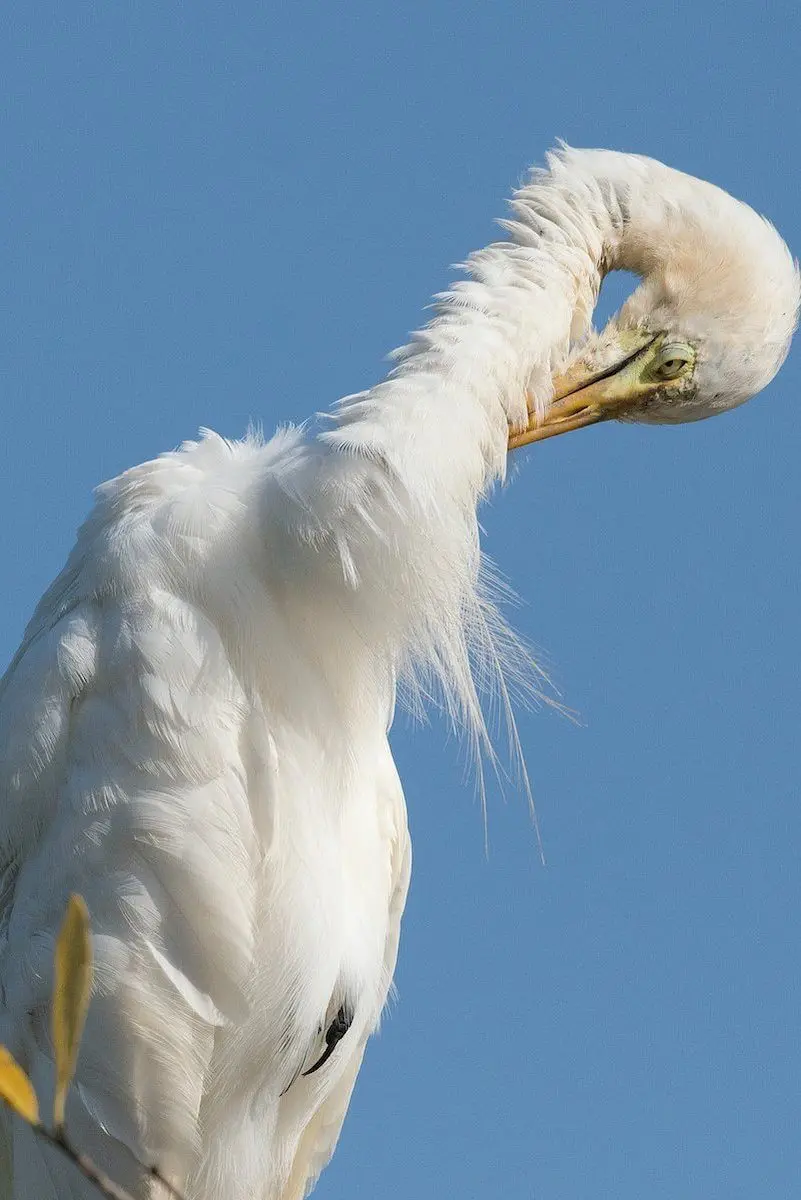Great Egret is otherwise known as The Great White Egret, Common Egret or Large Egret. Often seen as the one pictured below, standing on one leg only. The bird has a notable kink of its neck, curving it into an “S” shape when flying. Although we don’t see many land around Footsteps we know when they are flying overhead. They create a shadow like a sun has disappeared due to their massive wingspan.
Where is the Great Egret found?
You will find Mr Egret a short walk from Footsteps. When breeding they nest at least three metres up in the trees close to a big lake or wetlands. You can walk there unaccompanied or if you would like a guided experience just ask Sarani Darboe or Lamin Bojang. They will be very happy to take you.
What does it look like?
It is a big bird indeed. Measuring up to 1 m tall, this heron can measure up to 104 cm in length and have a wingspan of up to 170 cm. Averaging one kilo, some of the bigger ones weigh in at as much as one and a half kilos.
What does it feed on?
They feed mainly on fish, frogs and sometimes even small mammals. A skilled hunter, It stands motionless waiting for its prey to come within striking distance of its spear-like bill.
Want to know an interesting Factoid?
Huge numbers were killed around the end of the 19th century. Their plumes were highly prized as a decoration for fancy hats. Since then numbers have recovered as a result of conservation. And because attitudes have changed somewhat about where the plumes are more beautiful.
How does it sound?
Not normally a vocal bird; it gives a low, hoarse croak when disturbed, and at breeding colonies, it often gives a loud croaking Cuk Cuk Cuk and higher-pitched squawks. Source Wikipedia


